Thanks to Master Cat! Cory Milles for letting his Guard down:
Marvel took a chance when it decided to film Guardians of the Galaxy. It’s different from the company’s previous films in both tone and scope. However, its box office numbers indicate that it’s a gamble that has paid off. The movie is an origin story that doesn’t quite feel like an origin story, which is a good thing. It feels fresh. It’s been called a “space opera,” much as Star Wars was decades ago, and understandably so. From beginning to end, the story packs in a large plot weaving together the backgrounds of many characters and featuring numerous references from the Marvel universe. While a synopsis could be written including the minutia of events and characters, this Beat Sheet focuses on the basics. One thing is clear, however: Guardians of the Galaxy is a good film because it uses good story structure. From start to finish, audience members can emotionally identify with Peter Quill and his companions.
Written by: James Gunn and Nicole Perlman, based on the comic by Dan Abnett and Andy Lanning
Directed by: James Gunn
Genre: Buddy Love / Superhero
Opening Image: Sitting alone outside a hospital room, a young Peter Quill (Chris Pratt) listens to a cassette tape labeled “Awesome Mix Vol. 1.” He is lost in the music as his grandfather comes out to get him.
Theme Stated: Peter is led into the room of his dying mother to say goodbye to her. It is here that we have a brief “Save the Cat” moment; Peter’s mother asks about his black eye, and he tells her that some kids “squished a frog and killed it for no reason.” This shows that deep down, Peter Quill is a protector, even though he might not realize it until later.
His mother hands him a final gift while reassuring him that she will be okay as she goes to a better place. Peter, she says, reminds her of his father, an angel from the stars. She tells Peter that his father will come to get him one day soon and admonishes him to hold her hand as she passes.
Peter is afraid to and holds back, refusing to take her hand. As the life leaves his mother, he becomes despondent, crying out and rushing out of the room, taking only his backpack with him.
Having courage to trust others will be what Peter needs to learn in his quest. Only by doing so will he be able to conquer the greatest threat the galaxy knows.
Set-Up: As Peter hurries outside the hospital, a brilliant beam of light shines on him, beaming him into the craft above as he is taken from this planet.
Twenty-six years later, Peter Quill is on the planet Morag searching for a valuable orb. In a Raiders of the Lost Ark-esque moment, Quill obtains the orb, which he hopes to sell to an interested buyer. He is confronted by Korath, a servant of Ronan the Accuser. With others desiring to obtain this object, Quill knows it must be worth quite a lot, and he escapes Korath and returns to his ship, the Milano.
On the ship, Peter communicates with his partner/mentor, Yondu, about the orb. However, instead of sharing it with Yondu, he betrays him to collect the money all for himself.
The planet Xandar has signed a peace treaty with the Kree race, but there are still those who do not agree with the treaty. Ronan the Accuser is a Kree zealot who will use whatever violence he can to demonstrate Kree power and dominance. When Korath reports that Quill has the orb, Ronan turns to the adoped daughters of Thanos to retrieve it. He asks Nebula to obtain it, but before she can go, Gamora (Zoe Saldana) volunteers.
Catalyst: Quill tries to sell the orb to his buyer on Xandar, but when he reveals that one of Ronan’s servants was also after it, the buyer wants no part in the deal, pushing Quill out. Gamora meets him outside, then steals the orb from him.
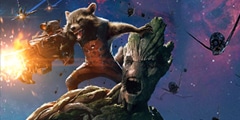
Debate: A fight breaks out between Quill and Gamora as each takes possession of the orb in turn. Meanwhile, Rocket (voice: Bradley Cooper), a genetically-engineered raccoon, and Groot (voice: Vin Diesel), a tree creature and Rocket’s companion, learn about the bounty on Quill. As Quill fights Gamora, Rocket and Groot join in the fight, too. They continually best each other until the Nova police force arrests them all.
After the Nova arrest, each of them is sent to the Kyln, a space prison. In the prison, Quill and company are out of their element (except for Rocket, who has escaped from prison multiple times). Whereas Peter Quill was once so confident in his abilities that he called himself Star-Lord, in the Kyln he is nothing, threatened by the other prisoners. When he catches one of the Kyln personnel listening to his music, he threatens him but is quickly put in his place. After a shower, he sees Rocket’s back, covered with scars and remnants of experiments.
Break into Two: Peter Quill is officially a prisoner in the Kyln, with little hope of escaping.
B Story: While at first hating Gamora, Quill starts to develop feelings for her. This is part of the B Story, but the larger B Story will focus on the group as a whole as they come together, learning to trust one another and to show the courage that is necessary to do what is right.
Fun & Games: In the prison, Quill notices that Gamora is the focus of many of the prisoners’ attention, but not in a good way. Several of them take her away to kill her, knowing that she is Thanos’s adopted daughter. As many races in the galaxy have lost loved ones due to Thanos’s evil deeds, the prisoners plan to exact their vengeance on her. Quill follows them, as does Rocket, but the plot to kill Gamora is interrupted by another prisoner, Drax (Dave Bautista). Known as Drax the Destroyer, he reveals that he is the only one who has the right to kill Gamora; Ronan killed his wife and daughter, and he wants to return the favor. Gamora reveals that she was planning on betraying Ronan, and that is why she stole the orb, to sell it to another buyer. Quill convinces Drax to let her go, and if they escape, they can split the reward and Drax can have his revenge on Ronan himself.
Meanwhile, Ronan reveals to Thanos that Gamora has betrayed them. Thanos is dismayed, as he considered Gamora his favorite daughter, a fact that upsets Nebula. He orders Ronan to retrieve the orb.
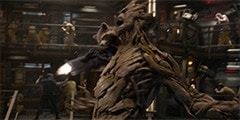
Under Rocket’s leadership, the five enact a plan to escape from the Kyln. Taking control of a guard tower, Rocket flies it out of the prison to where they can board the Milano. Peter Quill briefly goes back in to get his Walkman from the guard and escapes with the others.
Midpoint: Having escaped, the five sit aboard Quill’s ship. Their next destination will be the mining colony at Knowhere, the remnants of a severed Celestial head. For now, they are free, they have the orb, and they are about to collect their reward.
Bad Guys Close In: On board the ship, the five start arguing. Rocket takes pieces of the ship apart to make devices and finds the unopened present Peter’s mom gave him the day she died. After asking about it, Quill yells at him to leave it alone. No one else seems to get along; Groot is viewed as stupid, only able to say the three words, “I am Groot,” and Drax feels disdain for Gamora.
Arriving on the planet, Drax, Groot, and Rocket go to a bar while Gamora and Quill wait for the buyer to meet them. Quill teaches her about music and how it makes people feel emotions.
Drax, Groot, and Rocket, drunk, get into a fight. When Quill confronts him, Rocket says that he is tired of all the names people call him, that he never asked to be taken apart and experimented on. His tough guy exterior sheds as he reveals his emotions. Drax wanders off as the others go to meet the buyer, an individual known as The Collector.
The Collector reveals that there is an Infinity Stone inside the orb, and proceeds to describe its history and immense power. Quill becomes concerned, knowing that Ronan was in pursuit of it, and possession of this Stone would allow him to destroy the galaxy. One of The Collector’s servants attempts to take hold of the Stone, and it destroys her and the building. Quill and the others escape with the Stone inside the orb, with Quill saying that it needs to be taken to Nova Headquarters where it will be safe.
As they escape, they are confronted by Ronan and Nebula, along with other ships. In his desire for revenge, Drax had summoned Ronan. Gamora attempts to escape in a ship and is pursued by Nebula. Meanwhile, Drax meets his match in Ronan and is bested by him. Nebula pursues Gamora’s ship and shoots it, expelling her and the Infinity Stone from it.
All Is Lost: Peter Quill watches as Gamora’s body is hurled into space and Nebula obtains the orb for Ronan. Quill, using his mask, leaves his ship and calls Yondu, who was after him for being double-crossed. It will mean certain death for him, but it will mean death for Gamora and the universe if he does not call. Yondu’s ship arrives and abducts them, saving them.
Dark Night of the Soul: Drax admits his pride caused this, and with Rocket and Groot, they confront Yondu on his ship. Quill tells Yondu that he has a plan to get the orb back from Ronan and needs the help of Yondu and his men.
Meanwhile, Ronan confronts Thanos and declares that he will use the Infinity Stone himself, destroying Xandar, and then will destroy Thanos.
When Peter finally has time to speak with the other four companions, he reveals that he only has about “12 percent of a plan.” They know that if they try to stop Ronan, that it will most likely mean certain death for them all. However, he has also realized that they are all a bunch of “losers,” individuals who have lost something in their lives. And right now, they have a chance to do something good. The others agree, with Gamora stating that she has lived most of her life with her enemies, and she would be honored to die amongst her friends.
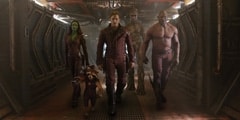
Break into Three: Quill and the others prepare their plan of attack. Alerting Nova Headquarters, they face off against Ronan’s ship, the Dark Astor.
Finale: An aerial battle ensues, and with the help of Rocket, Quill boards the Dark Astor with Groot, Drax, and Gamora. Nova ships head off the enemy fighters as Gamora battles Nebula. Drax and Quill confront Ronan on the bridge of the ship, firing a weapon at him that Rocket made. Ronan survives, and while enemy ships dive bomb the city below, Rocket crashes his ship onto the bridge, saving Quill and the others.
The Dark Astor falls to the surface below, and Groot begins to grow a giant cocoon around the other four. Rocket knows that this will mean death for Groot, but Groot is willing to make the sacrifice. After the ship crashes, Quill and the others emerge from the wreckage, surrounded by the shattered remains of Groot’s splintered form. Ronan stands before the people at the scene, laughing at them for looking toward these “Guardians of the Galaxy” and for thinking they could stop him from destroying the planet.
Peter Quill enacts a unique method of distracting Ronan, and it works long enough to allow Drax and Rocket to fire a shot at him, knocking the Infinity Stone from him. Peter grabs it before Ronan can, and just like with The Collector’s servant, it begins to destroy him.
Gamora urges him to take her hand, and Peter recalls his last moments with his mother and how he did not have the courage to do so. This time, he reaches out, joining hands with Gamora. Drax takes his other hand, and Rocket does so, too. Soon, they are able to control the power of the Infinity Stone. They destroy Ronan and emerge victorious.
At Nova Headquarters, Quill learns that he is only half-human, and the fact that he was able to survive the Infinity Stone’s power must mean that his father is also something more powerful and ancient. Rocket boards the ship with a stem from Groot’s remains, and there are signs of renewed life emerging already.
Final Image: Inside his ship, Peter reads an old note from his mother in which she calls him “my Star-Lord.” He finally takes hold of the present his mother gave him. Opening it, he finds another cassette tape entitled “Awesome Mix Vol. 2.” He smiles, and whereas at the start of the story he was listening to the first tape in isolation, now he can listen to this one surrounded by his new friends as they take off to protect the galaxy.
Cory Milles
36 Comments
Leave a Reply Cancel reply
You must be logged in to post a comment.


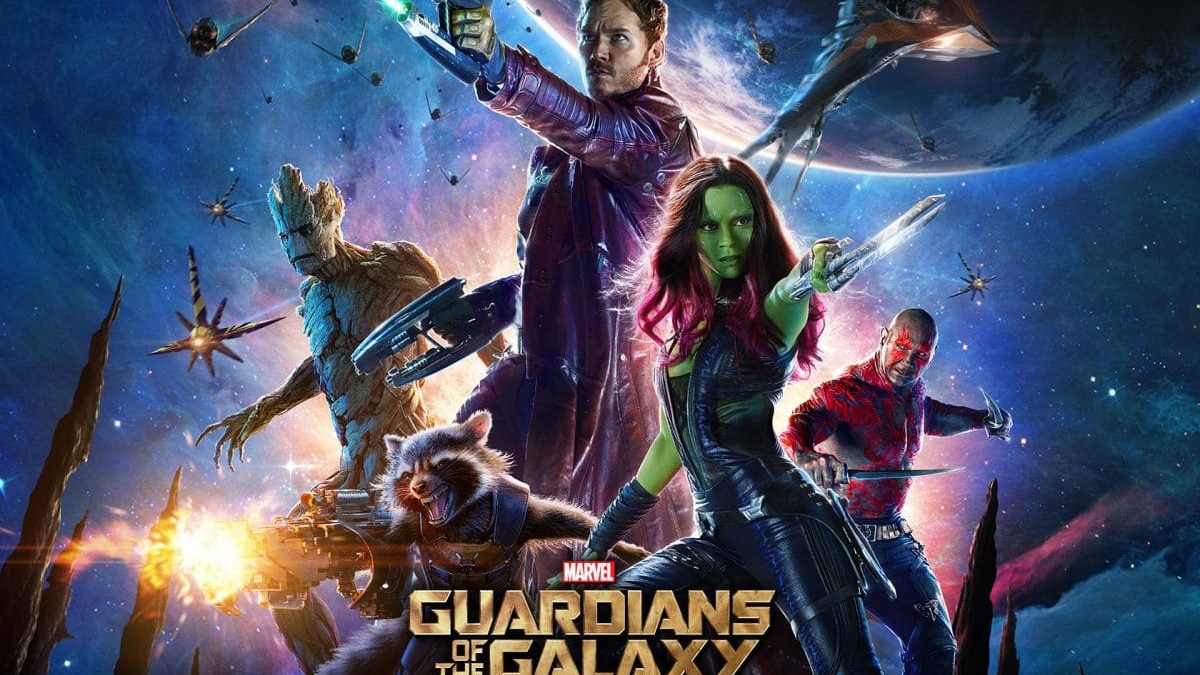
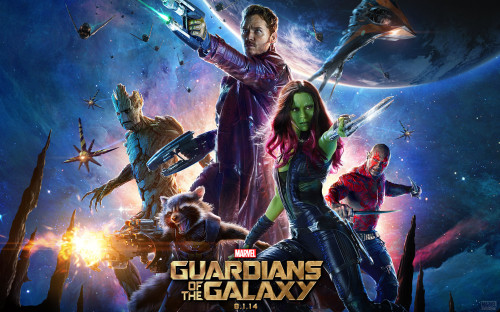
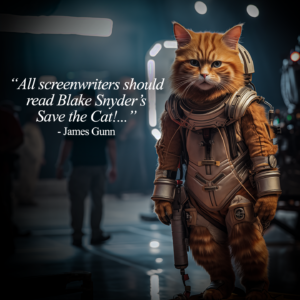
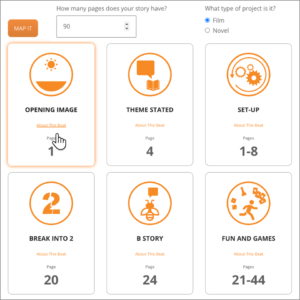


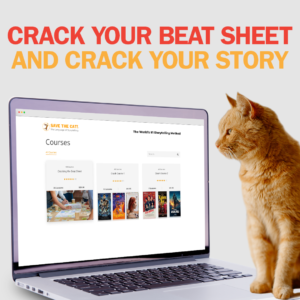


I just came out from seeing GotG and received this BS2 analysis. Impeccable timing :P One quick question: since GotG and The Avengers share a similar structure, theme (‘to learn how to work as a group and to trust others’), why do you clasify this movie as Buddy Love/Superhero and Avengers as Institutionalized/Superhero? Thanx!
Well, Avengers copped out behind a main character dying to get their superheros together.
In this film, the characters perspectives get in the way, but are united by purpose with the help of Quill.
Also, it’s way funnier.
Awesome! Looks like I was spot on with my BS2 analysis of this great film!
Hi, Jaime! I wrote the beat sheet for The Avengers, and I agree with you that I should have classified it as Buddy Love/Superhero rather than Institutionalized/Superhero. I believe that I had written it after seeing it for the first time, but after additional viewings, there are some elements I should have clarified. For example, in the comments for that beat sheet, I mention that I should have moved the Midpoint back to when Loki was apprehended. That was an error on my part, and I now go to movies with a more purposeful intent so that I can avoid these missteps in the future. Thanks for your question, and I hope you enjoyed the movie!
Thanx Cory! For both your great BS2 analysis and your response!
This is awesome!
I thought break into 2 was when the decided to escape and made a plan to work together.
I thought the Mid point was when they find out what the stone is but they lose it. That would be both a false victory and a false defeat.
I’m definitely going to watch this movie again and work out the beats.
Thanks!
spoiler alert: none of this matters.
For anyone who has a love of storytelling and wants to master the art of story structure, yes, it does matter.
Agreed. It matters to those who want to understand storytelling and filmmaking so that they can become better with practice. Also, I’m with James’ original comment. The “Break Into Two” is supposed to be where we see our hero transition from his thesis world to the antithesis one, then this scene shows us how Quill has chosen to take his first step in the threshold from being a rebellious loner to a team player who will ultimately become the team leader.
The “Debate” section poses the question of whether or not these characters (especially Star-Lord) can coexist as a group long enough to survive? Quill answers that question with a hard “Yes”, as evident by the scene where Groot protects him from becoming another inmate’s prison wife. He declares “I’m with them”. From there the group chooses to put their differences aside and start planning their literal “break out”.
You’re right James. The Midpoint is actually the entire sequence after they break out of prison and they’re waiting to see the Collector. It’s a “party” as Blake would say- the characters get drunk and gamble. Peter has a romantic scene with Gamora. We get to know more about the characters and the Macguffin Infinity Stone. The plot doesn’t really kick back in until the infinity stone explodes and Ronan shows up. That’s the beginning of Bad Guys Close In.
The theme stated omits two points. First, Peter’s Mom asks him about his black eye, that is, one must at times sacrifice oneself to help others. Second, Peter said “they smushed it with a stick”, which refers to Ronan’s sceptre.
Erin, I missed this part when I saw the film, but after watching again, I noticed the significance of the theme stated. And yes it is a two step statement. Under what circumstance does one do this in your own screenplay, thanks.
Thanks for the Beat Sheet on GotG. I am trying to make sure I understand the beats. I thought that classically, during Break into 2, the hero (who has denied accepting the invitation to adventure during the debate) finally decides to accept the adventure/step into upside-down world. In this beat sheet, it looks like the hero is dragged unwillingly into Act 2. Is that still considered a “break into 2”?
I think classically, you’re right; the hero takes the step into the Special World (according to the Hero’s Journey structure). But in this case, it seemed that the antithesis of Peter’s world was one in which he was not in control. In Act 1, he was a rogue in his own mind, able to double-cross his friend/mentor confidently, and only when he was thrown into the Kyln was he out of his element. He was vulnerable and the low man on the totem pole, so to speak. It was the “antithesis” world for him. It was in this world where he had to learn to depend on others if he wanted to get out and to survive, something he would not normally do as we saw early on. Blake wrote in Save the Cat! that the hero needs to take that step proactively into the new world of Act 2. Peter doesn’t necessarily do that while entering the Kyln, but when he begins to accept the companionship of the others to survive. It’s a willing act for him to band together, to help Gamora, and to team up with her in the Kyln for his own good (that is, the payoff of selling the orb if they get out).
I classified the break out as the Midpoint because this is when things seem like a false victory for Peter… he is out of the Kyln, he has the orb, and he is on the way to collect the payout with his new “team.” Of course the Bad Guys Close In pretty quickly… the team doesn’t function well, as they are not truly a team. Sure, they escaped, but will they be able to stay together? In this case, the bad guys are themselves as they argue, fight, bicker, and lack trust in each other.
I love this discussion! Of course, I only saw the film once, and I know I can learn more from these comments. Erin, I loved your input on the Theme Stated and can’t believe I didn’t catch that… thank you for adding it! You are so right that this communicates the theme so well! Thanks, everyone!
Cory , it is great that you clarify Scott’s comments on the break into 2, it was such a great help, it cleared my mind. How come this ‘drag into’ the antithesis did not affect the movie? Do we break rules like this if we are convinced it will work?
Thanks Cory; that’s a tremendously helpful response.
I too felt enlightened in seeing the Theme Stated above. I saw the movie twice, and the hospital scene was delivered so emotionally, I could not make out what Peter and his mom were saying — both times! So: very helpful to see it laid out.
Really enjoyable discussion; thanks all!
I think that’s why I missed it, there was so much emotion in the hospital I drowned in it. Clearly, James Gunn did a splendid job directing that part.
Isn’t the debate the entire section in which they act as individuals? That is, during the big fight in public and during their first moments in jail? The debate shows them trying to work alone- and where does it get them? Jail. It is only when Peter decides to step in to help Gamora that the debate ends and he therefore actively steps into act 2… the crazy upside-down world of teamwork and all the fun and games of a fledgling team learning to cooperate. The Debate is whether to go it alone, and the break into 2 involves doing something for others.
Hi, Nick. I agree that the Debate section includes the entire time that they work as individuals. I don’t think I fleshed that out as well as I could have in the Beat Sheet. I tried to add some clarification to that when I wrote in the comments above regarding the Break Into Two. You’re right, though; the Debate definitely focuses on that aspect of their relationship.
Good job. Thanks.
Hi James, would say the BS2 on GotG is accurate?
I’m a newbie and started doing the exercises in the Genre chapter. I went through Fandango and looked at some Loglines/synopsis things and tried to assign a genre. Based on the synopsis (I have not seen the film) it seems like an “Out of the Bottle” genre. Here’s the synopsis I used. Am I off target?
In the far reaches of space, an American pilot finds himself the object of a manhunt after stealing an orb coveted by the villainous Ronan.
I saw Guardians of the Galaxy twice now and I was under the impression that it was a Golden Fleece movie.
I concur. They seem to be searching continually for a place in which to sell the orb. This is more a GF movie in my mind.
Hey, just wondering…don’t you think the Save The Cat moment was kind of diluted when the very next time we see Quill he is using small animals as soccer balls and soon after murders a couple of people?
I just got back from seeing the film for a second time, and I still loved it. I wouldn’t classify it as Out of the Bottle because those movies often involve a “wish” that a main character makes in a desire to change their lives, something magical like a “spell” that makes it happen, and a lesson that is learned from the experience. This movie doesn’t really fit that description. Even though it takes place in space, that is consistent with the story universe that was created. As a result, we accept that there could be aliens, tree-like beings, and a genetically-modified, talking raccoon. I also would not necessarily classify it as a Golden Fleece, because these stories often involve a quest to obtain something. In the story, Peter Quill and the others already have the item that is desired by others; the focus of the story is more about how they are trying to cope with each other as the orb is in their possession. The story really isn’t completely about the orb and the Infinity Stone; it is about them as a group. That is why I classify it as a Buddy Love genre.
As for Peter Quill’s Save the Cat moment, I can understand the thoughts about how this could have been distilled as he was on the planet Morag in the beginning. Of course, the animals he kicks away are predators who are trying to attack him, but I think that in a way, it adds to the impact of the previous moment. After a heartbreaking introduction (my wife said that within the first two minutes, she was crying… and even I get emotional watching it!), we see him more carefree and a Ravager. Part of us wants to see him return to his innocence, wondering if he will ever get back to being that kid we saw at the beginning. We still feel for him, and the idea of the Save the Cat moment is to get the audience to care for the character and to root for him. And director James Gunn does this masterfully. In my opinion, it’s one of the most powerful instances in which I have felt for a character, and none of the emotion feels forced at all.
It’s a very well-constructed story, from the complexity of the characters and their relationships, to the way music plays a part, each song having meaning for the scene in which it is used. I think this is why the film has fared so well in box offices; it defies audience expectations and creates something that can be enjoyed by everyone. Gunn made a movie in which we care about the characters because they did so first. It’s a story where the audience cares for an orphaned boy, an alien assassin, a mourning father who can kill with ease, an anthropomorphic tree alien, and a genetically-engineered intelligent, talking raccoon.
Not many stories can do that!
In the interest of healthy debate, I’m going to make a bold assertion based on my experience with — and passion for — Blake’s tools: GUARDIANS isn’t a Buddy Love; neither is AVENGERS.
In every other genre, the love story is the SUBPLOT — the B-story; in a Buddy Love, it’s the A-story — that’s the DEFINING CHARACTERISTIC of a Buddy Love. And the “lovers” (or “buddies,” if you prefer) need to be weighted basically equally (if not 50/50, than no more/less than 60/40) in a BL; that’s how you know ENOUGH SAID was a Midlife Passage and not a Rom-com Love: Julia Louis-Dreyfus’ story was weighted significantly more heavily than Gandolfini’s. It was HER story, not THEIR story, even though HE was a crucial component with his own emotional stakes in the narrative. It’s also the reason we know TITANIC is a BL and not a DWAP: Jack and Rose’s romance is the A-story, and the socioeconomic and environmental complications aboard the ship serve as the subplot to that. (TITANIC could’ve been done as an Epic Problem, if Cameron had been so inclined, but then it would’ve been required to adhere to a different set of conventions that he wasn’t interested in exploring front and center.)
I submit that GUARDIANS is a case of a straight Superhero story. Yes, the Guardians learn to work together once they push through their individual arcs; that adds emotional depth and resonance to the story, but it doesn’t qualify it as a Buddy Love, as Quill’s transformational arc and importance to the narrative outweighs everyone else’s handily (just as STAR WARS is Luke’s story, even though Han and Leia and Obi-Wan and the droids play an important role in his journey from farmhand to Jedi, and all have a utilitarian and emotional stake in the outcome). In the Phase-One Marvel films, the various heroes arc’ed in their individual movies, and then the TEAM AS A WHOLE arc’ed in THE AVENGERS: They went from a dysfunctional group to a functioning unit (the B-story to the more urgent narrative matter: stopping Loki). But, that’s still a pure Superhero story, because it was about the origin of a SUPERHERO TEAM (the first of its kind cinematically, and a high-water mark that will be hard to beat). If the “love story” isn’t the A-story — and it isn’t in either of these movies — than it isn’t a BL, wholly or partially.
I’ve yet to see a movie that doesn’t fit squarely into one of the ten categories; I recently commented on this subject over at Erik Bork’s website: http://www.flyingwrestler.com/2013/06/finding-the-right-genre/. When I encounter a story that exhibits characteristics of multiple genres — and there are lots of those — I ask myself what the CENTRAL DRAMATIC QUESTION is. For example: STAND BY ME and FERRIS BUELLER are both about a group of young friends on the eve of a new phase in their scholastic careers (junior high school and college, respectively) who work through their separation anxiety (among other issues) over the course of “one last adventure” together. Both films seem like they fit firmly alongside AMERICAN GRAFFITI and AMERICAN PIE in the Adolescent Passage sub-category, but only FERRIS does; because the central dramatic question of STAND BY ME is “Will the boys find the dead body?”, it’s a Buddy Fleece. So, when you’ve got a story that straddles the line between two genres, zero in on the precise nature of the conflict that’s providing the plot’s central thrust, and the proper category will become self-evident. The central dramatic question of THE AVENGERS is “Will the team stop Loki?”, not “Will the team learn to work together?” Learning to work together was a crucial obstacle to defeating Loki, but it wasn’t the central dramatic question posed by the narrative.
Both AVENGERS and GUARDIANS had their characters wrestle with “joining the team,” but that doesn’t make either film an Institutionalized; both featured an ensemble of heroes who learn to work together, but that doesn’t make them Buddy Loves. The ten different story types each have markedly different requirements — and correspondingly different audience expectations — and a writer needs to know with certainty upon which his chosen premise is expected to deliver, which is where Snyder’s cogent categories prove an indispensable tool. “Muddying the waters” by trying to serve two masters, like FLIGHT (ROP and SH) and 47 RONIN (Institutionalized and GF) did, only results in a story that leaves audiences disoriented and disengaged.
Hi Sean,
Mega like your analysis and help me understand better the difference in a more structured way. Keep the great work.
Regards,
Jose
Sean, I agree with you on the genre classification. I didn’t want the genres I listed to cause any confusion, but I added Buddy Love in there because of the subplot. But I think you’re accurate in your assertion that the main plot is best served by the Superhero genre, and perhaps that is the sole genre I should have listed. I like what you added in regard to how to discern the genre by focusing on the central dramatic question. I also think that movies like AVENGERS and GUARDIANS OF THE GALAXY are somewhat unique and “new” in terms of stories told in the Superhero genre. Rather than focus on individual story arcs, these focus on the cohesion of the team, yet also have the heroes facing a bigger threat. I think that these films will grow in number, especially with AVENGERS 2 and BATMAN V. SUPERMAN: DAWN OF JUSTICE on the horizon.
Thanks for your excellent insight!
@ Cory Milles
Really useful article.
Cory, when you came up with this Beat Sheet for the GUARDIANS OF THE GALAXY, where did you find a copy of its screenplay? Did you do this analysis based on the screenplay, or from what you watched in the cinema?
Has any of the commenters had actually read the screenplay while applying Blake’s strategies?
I’m trying to get a copy of this script. Does anyone know of a safe website that might have it?
Hi, Heather. Sorry for the late reply. I wrote my analysis from seeing it in the theater. Basically, after writing out the beats, I double-check details using Internet Movie Database (names of characters, exact order of events, etc.) But overall, I go in to the theater already thinking in terms of the beats.
I do not know of any place to find the screenplay. Sorry!
@ Cory Miles
Hi Cory!
And thanks for that explanation. I assumed that you had a copy of the screenplay.
It is a really useful analysis.
I would have thought this was Epic Fleece.
I guess Comic Book Hero or something could work too.
Hi Cory, it is such a great job you did on the BS2 for GotG. I am new here, so I am getting acquainted with the website. Meanwhile, I publish http://www.indieactivity.com, I would like to interview you on your career.
Love this movie, one of the best Marvel movies in years. Trying to find the screenplay online somewhere. Thanks for the beat sheet.
Wow! After all I got a website from where I be able to really obtain helpful information regarding my study
and knowledge.